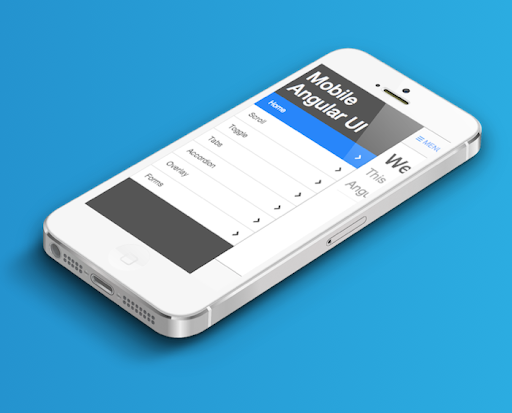

Let’s gather various strategies to monetize your mobile application into one that benefits you in every way possible. Make it a serious source for income. There are many strategies that you can incorporate but what the best ones? Let’s find out!
What is app monetization?
By definition, ” Monetization refers to the process of turning a non-revenue-generating item into cash, essentially liquidating an asset or object into legal tender. ” Now, ” App Monetization refers to making money from a mobile app without charging for it. Users often baulk at paying for apps because the vast majority of them are offered free of charge. ”
In simple words, App Monetization is a process to simply convert the users of the application into revenue.

Why is App Monetization Important?
There are many challenges that come up and stare at us in our faces which are associated with app monetization and this is how we can overcome them,
It makes your app get noticed:
Often times many applications get lost in the app store or play store. It is a fact that there are around hundreds of mobile applications being posted in one day and if your app is one of them, how can you be so certain that it will meet the eye of the consumer? Another fact is that there will probably be around 30-40 mobile applications already present that operates under a similar industry to which even your application belongs to. In order to overcome this hurdle, app monetization comes into play. Creating apps with great appeal, including usable features, graphics and intuitive design to provide a wholesome experience will most definitely attract more crowd to your services and this is a part of app monetization.
Dealing with different screen sizes:
Making your application in a way that works flawlessly on any device is what makes an application successful. Responsive design is what makes an application more usability thus, the same can be adjusted to suit different formats and screen sizes. Creating an application which runs seamlessly on any of the devices, makes it usable and popular.
Making the application interactive:
Making an application interactive and engaging is one of the few ways which actually makes the customer use the application for a longer period of time.
Paid download isn’t the only way:
Higher the engagement, higher will be the advertising bucks. Higher revenue implies that the developer can keep the app free for download and increase downloads, which will eventually bring more advertisers.
Effective Ways to Monetize Your Mobile Apps
1. E-Mail Lists
People usually would like to believe that E-Mail Marketing Campaigns are just like cold calling for selling your products and services to random customers. But is that really what it entails? I for one choose not to believe in it. People tend to keep changing their email address and it is natural that your ad or email that you sent might get lost in the mail or the receiver might never read it. To make sure that the receiver most definitely reads or just comes across your email, you should sen it on a regular basis. And by regular basis, we mean finding and maintaining a balance between sending emails continuously so that the receiver knows about you enough to contact you and not sending them in that much amount that it ends up crowding or annoying them away.
With that, the email content should also be very well thought out that it does its job of introducing your company, the good and services that it provides, how it will benefit the reader’s life and the offer that you can provide jo to nudge the reader into the right direction of procuring your products and services.
According to Wiselytics, the total life of a Facebook post is only a few hours, while a tweet’s lifespan is just over an hour. Email, on the other hand, has a lifespan of 12 days.
There are many options available that you can incorporate to market your product. An in-app subscription form will give your app a real boost by prompting users to enter their emails, especially if you tempt them with the prospect of some great benefits for email subscribers. Also, an email strategy always varies according to the companies. For example, some send out weekly or monthly newsletters while others send out promotions and offer that they are giving via email.
2. Advertising
The ways in which advertising is being used everywhere and by every single person or business is uncanny. The impact that advertising has had on people and how they have changed buying trends of the general public is something to be amazed about.
So, it is right to say that if you are not adding or using advertisements in order to promote your mobile application, you are definitely not monetizing your application in the right manner. Here are some facts for you to keep in your mind while thinking of using advertising is a good idea or not.
Digital advertising through mobile apps has improved communication between advertisers and consumers dramatically. This is largely due to the crazy amount of time people spend on their phones. We’re talking at least 90 minutes a day – the equivalent of 23 days a year. Another well known fact is that people like free stuff. Every one is a consumer and every one feels the same way. Similarly, people like using apps that they do not have to pay for. That’s why 91 per cent of all app downloads were unpaid in 2013.
In order to use advertisements to your advantage, you can incorporate any of these 5 types of ads in your mobile app:
Interstitial/ full-screen ads – The main problems with banner ads are the size and the fact that they are intrusive. A solution to overcome this hurdle is to take the similar ads and display them as a full screen ad to the user. This occurs between separate user flows. Hence the name interstitial. These are the ads placed in natural pause points like when you are navigating different departments in an app. Because these aren’t actually interrupting the experience of using your app, they’re more likely to generate clicks without causing frustration.
– Capture form – These are the opt in ads which offer incentives to its users in form of points and token whoever enter their email address to the website. These are mostly seen in games.
– Advanced overlay – The advanced overlay is like interstitial ads that are very much interactive instead of being in form of simple clickable images. They’re sort of a mixture of capture form and full screen ads.
– Banner ads – These ads are found at the top or bottom of the screen and are ineffective because they are much more distracting. When they constantly display ads, they are more likely to irritate the users. With this in mind, you must keep a thorough thought to incorporate another business’s app. The ads are generally so small on a mobile screen that the advertiser doesn’t get much value from using the space. This means that they are usually not willing to pay much for the privilege. They have low engagement rates.
– Notification ads – These pop up in the mobile device’s status bar and make users more aware of the ad’s presence. These apps aren’t the most well-loved ads out there and have the capability to destroy the reputation of the app, and hence must be used carefully.
– Affiliate Ads – Affiliate ads are a method of app monetization that allows apps to generate commission from other apps, products, and services by advertising them through your app.
– Reward Ads – App reward ads are popular, where users spend a lot of time in the app, such as games. In this scenario, users are offered a reward to engage with content.
– Video Ads – Video is a great space, in general, to place ads in your mobile app. With so many avid viewers of video online–especially from mobile devices–it would be a shame to miss out on this monetization opportunity. When it comes to placing ads in video, there are a number of ways to do it.
So for example, in a game, you may be offered an extra life if you watch a 30-second advert.
The general idea behind adding advertisements is to induce engagement. The main benefit is that it is quick to implement and is a simple app monetization process. The main concern is that it can affect the app experience, only generates significant figures if you have a broad app audience.
Overall, the short truth is that without in-app advertising and mobile ad networks, a lot of apps wouldn’t exist. Depending on your brand, the advertisers you associate yourself with could pay you a considerable chunk of change to host their ads. According to Gartner Research, mobile advertising is poised to reach $18 billion annually.
3. Free / Premium Version
Subscriptions are a new trend. Every single app or steaming services trying to make people their permanent customers by asking them for subscriptions in order for people to get the full access of that site. A subscription model means that the user can download the app for free. They then get access to all or some features of the app for a specific time. Once this period is over, they will need to pay a recurring fee to keep using the app. Spotify provides full access which is without ads so that people would subscribe to it. That is exactly what Netflix, Hotstar and other streaming services provide. But Again, we have the fact that users are more used to not paying to download apps as the reason for this.
But for users to pay the subscription for the premium version of the app you must make sure that the features which come with premium version must offer a complete experience that works flawlessly. Because if in case it does not then it will definitely drive a lot many consumers away. If users do pay for the premium version of your app, your responsibility as a developer is to make it worth it for them. That way, they’ll leave positive reviews and recommend the premium version to their friends.
4. Sponsors and Partnerships
Finding the right partner always works in the interest to your business as well as theirs. If you find a partner which has a similar customer base or if it induces the growth of your business as the other business sells the kind of products that is in relation to yours adds betterment in the user experience. If an app is very popular among a certain niche market, companies in that space may approach the app developer for sponsorship opportunities to get their brand in front of your app users.
Users on another app who see your brand logo, and maybe even an interactive element typically found in your app appearing as part of the app they’re currently using. That could potentially convince them to go download your app. And if your partner includes advertisements featuring your apps, there’s a solid chance their users might click that ad to go straight to your app. This is called a click-through rate (CTR), and in some instances, it can be as high as 12.5 per cent.
5. In App Purchases:
Most applications that provide unpaid downloads mostly use the option of in app purchases. This is a method that has become more popular with games apps in recent times. Apps generate money by selling virtual or physical goods from within the app.
In app, purchases help the app owners to earn as much revenue as possible. Ludo, the online game earned a lot of money due to people being so free when they were quarantining. Similarly, games like PUB-G also had in app purchases and still even if it costs money, people still buy it to squeeze the whole experience out of the game.
There are many pros as well the app purchases,
- Having a free app will attract considerably more users at the start.
- It’s a fairly low risk as you’re not denying users access to critical features or content.
- You can make a hefty profit as in-app purchases are digital upgrades and don’t require storage or maintenance of physical stock.
- As users acquire add-ons, the experience improves and this, in turn, boosts loyalty.
- Can use this in conjunction with other monetization strategies.
Best Mobile App Ad Providers
1. Google AdMob:
AdMob is connected to the Google ecosystem, which means signing up and getting started is a breeze. If you have a Google account, that’s one less step to take. If you already have AdSense and AdWords accounts, you’re going to be in even better shape. Google instantly recognizes your identity and syncs all its platforms together for streamlined ad management.
2. Facebook Audience Network:
Facebook Audience Network is a Facebook Business tool meant for two parties: advertisers who want to take advantage of Facebook’s broad reach across multiple platforms and the publishers who want to ad adds. This option must be chosen according to the needs of the company itself.
3. MoPub:
MoPub is Twitter’s contribution to the mobile ad game. The real differentiator between MoPub and other mobile ad providers is the DSP connection. A demand side platform ( or DSP ) helps in placing the advertisements across the network which by result helps in optimal placement for the audience subset. MoPub works with nearly 200 DSPs, in addition to its own MoPub Marketplace. This means there’s a lot of competition from advertisers to get a space on your mobile app. This leads to higher bids for that space, which ultimately end up in your pocket.
4. Google Ad Manager:
Google Ad Manager (previously known as Google DoubleClick for Publishers) is another Google advertising product that can use to monetize your mobile app. The Google Ad Manager gives you access to the million advertisers from Google Ads, trading desks, and DSPs. Because of this factor, it is a well-known and competitive platform, this means they’re willing to spend much more for ad placements.
Conclusion
Spider India is a recognized firm working in Chennai, India. It is a mobile app development company which would answer to your all kinds of application needs. We have a dedicated team for design as well as development for the app. Communicate with us, tell us your requirements and we will come up with the right solutions. Making specialized apps for your company and providing unforgettable services is our motive. We help make your digital aspirations a reality. From developing an application, communicating and implementing your own creativity and providing the best marketing strategies for the success of your application is what we strive to give. Our past customers have been really happy with our services. We believe in constant growth, we believe in continuous improvement since no one is perfect but we also believe that your product can be perfect.
When every aspect of the business is already a risk, why take one more and remain ambiguous?
